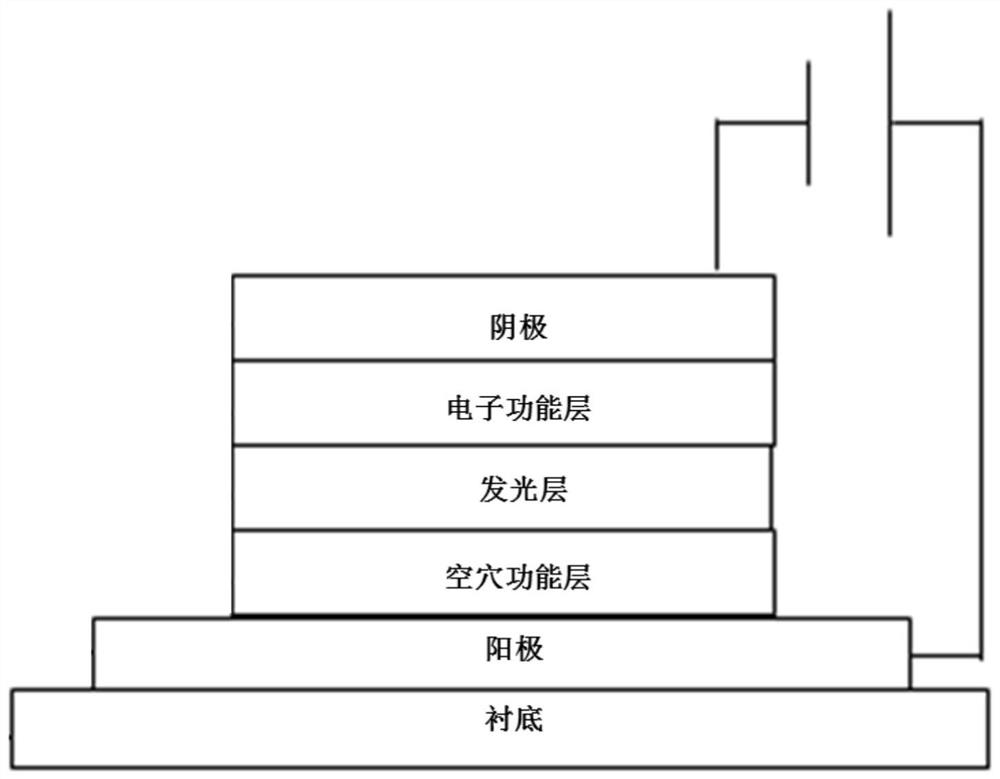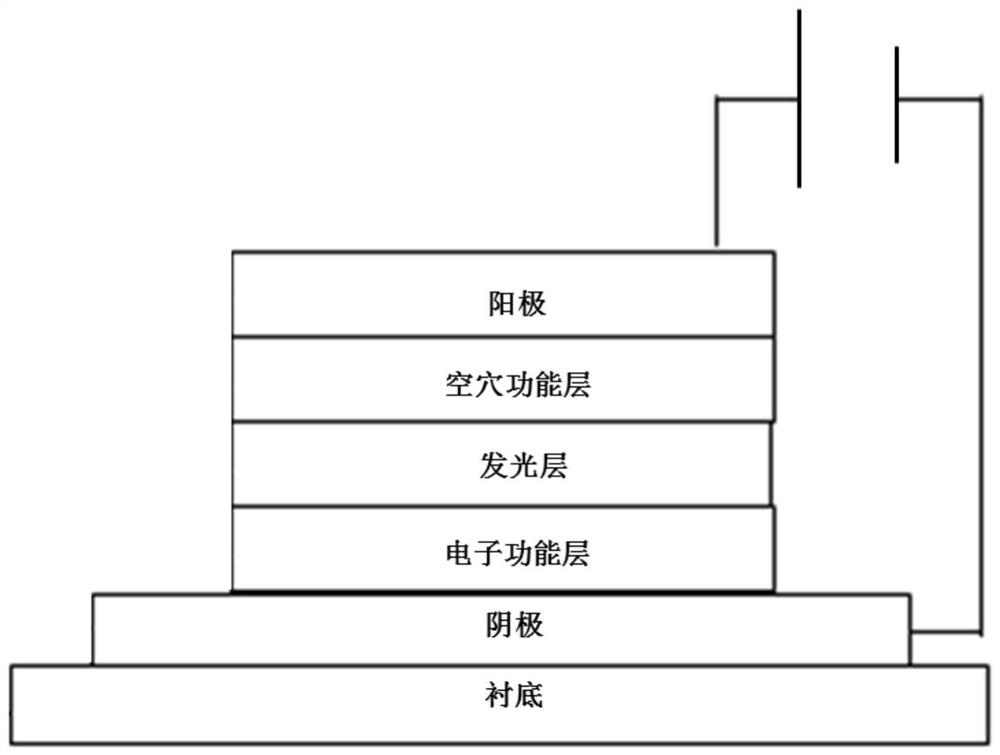Electron transport material, preparation method and photoelectric device
A technology for electron transport materials and optoelectronic devices, which can be used in electric solid devices, electrical components, semiconductor devices, etc., and can solve the problems of poor electrical conductivity and electron transport properties of nano-ZnO semiconductor materials.
- Summary
- Abstract
- Description
- Claims
- Application Information
AI Technical Summary
Problems solved by technology
Method used
Image
Examples
preparation example Construction
[0029] as attached figure 1 As shown, the second aspect of the embodiment of the present application provides a method for preparing an electron transport material, comprising the following steps:
[0030] S10. Obtain zinc oxide nanomaterials;
[0031] S20. Obtain the first zirconium salt, dissolve the first zirconium salt and the zinc oxide nanomaterial in the first organic solvent, add the first basic substance to react, and obtain the electron transport material.
[0032] The preparation method of the electron transport material provided by the second aspect of the application comprises dissolving the first zirconium salt and the zinc oxide nanomaterial in the first organic solvent, adding the first basic substance to react, and passing the first zirconium salt in the basic solution The reaction produces zirconium hydroxide (Zr(OH) 4 ), then Zr(OH) 4 Polycondensation reaction occurs, dehydration generates ZrO on the surface of zinc oxide nanoparticles 2The shell layer, ...
Embodiment 1
[0088] An electron transport thin film, comprising the following preparation steps:
[0089] ① First, add an appropriate amount of zinc acetate to 50ml of ethanol to form a solution with a total concentration of 0.5M. Then stir and dissolve at 70°C, add potassium hydroxide dissolved in 10ml ethanol lye (molar ratio, OH - : Zn 2+ =1.8:1, pH=12). Stirring was continued at 70 °C for 3 h to obtain a homogeneous clear solution. Subsequently, after the solution was cooled, it was precipitated with ethyl acetate, and after centrifugation, it was dissolved with a small amount of ethanol (repeated operation, washing 3 times) to obtain ZnO nanoparticles.
[0090] ② Add ZnO nanoparticles and appropriate amount of zirconium sulfate to 30ml ethanol to form a solution with a total concentration of 0.5M, in which the molar ratio of zinc:zirconium is 1:0.1. Then stir and dissolve at 70°C, add potassium hydroxide dissolved in 5ml ethanol lye (molar ratio, OH - : Zr 4+ =3.8:1, pH=12). Co...
Embodiment 2
[0093] An electron transport thin film, the difference between it and Example 1 is that the molar ratio of zinc: zirconium in step ② is 1:0.3, and the obtained ZnO / ZrO 2 ZrO in core-shell nanomaterials 2 The thickness of the core shell is 3 nm.
PUM
| Property | Measurement | Unit |
|---|---|---|
| Thickness | aaaaa | aaaaa |
| Particle size | aaaaa | aaaaa |
| Particle size | aaaaa | aaaaa |
Abstract
Description
Claims
Application Information
 Login to View More
Login to View More - R&D
- Intellectual Property
- Life Sciences
- Materials
- Tech Scout
- Unparalleled Data Quality
- Higher Quality Content
- 60% Fewer Hallucinations
Browse by: Latest US Patents, China's latest patents, Technical Efficacy Thesaurus, Application Domain, Technology Topic, Popular Technical Reports.
© 2025 PatSnap. All rights reserved.Legal|Privacy policy|Modern Slavery Act Transparency Statement|Sitemap|About US| Contact US: help@patsnap.com



